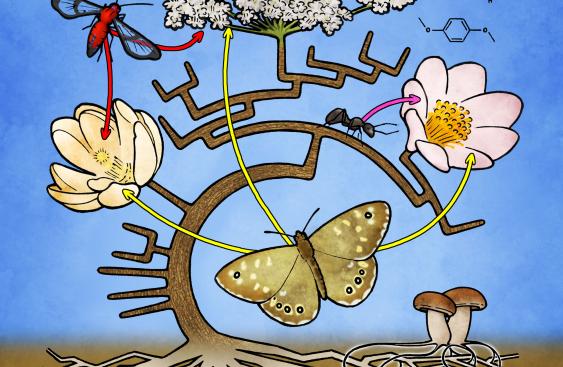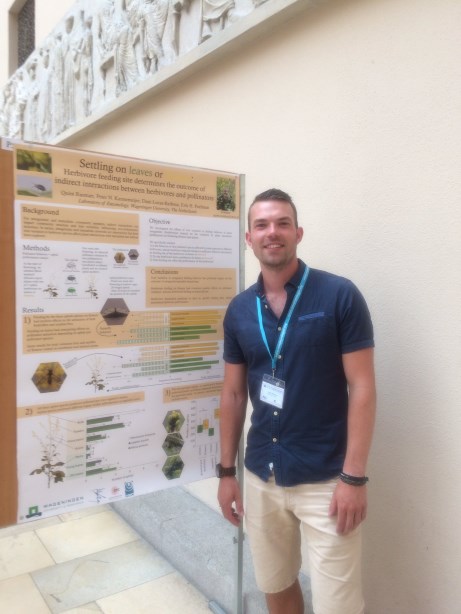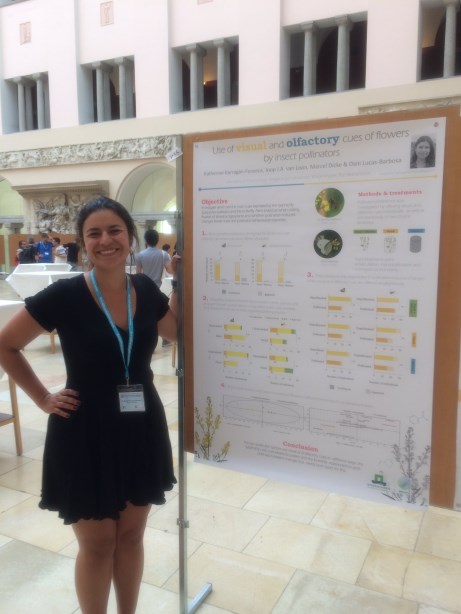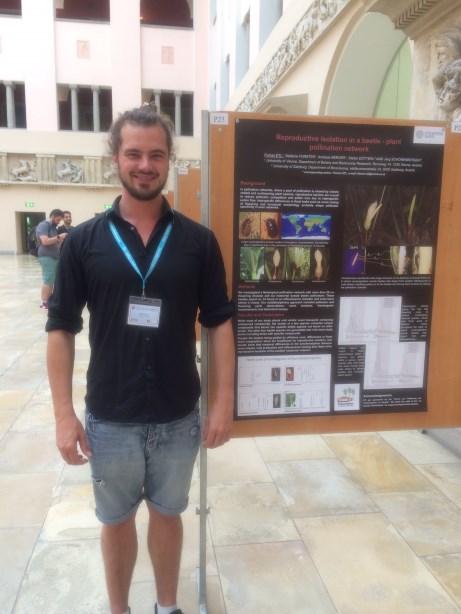Scope
Interactions are ubiquitous in nature and to a large degree shape the evolution of biological diversity. As a key example in many ecosystems, plants interact with a range of partners, ranging from mutualistic microbes, pollinators, seed dispersers, to antagonistic herbivores and pathogens. A range of different traits are of key importance in these interactions, such as flowers, fruits and their signals, or the multitude of defence traits plants use to contain their enemies.
Selection is in many ways a key process because it links extrinsic (ecological) factors that drive evolutionary change to the intrinsic (genetic) factors that ultimately define evolutionary trajectories. Mechanisms causing selection in nature are however, little understood and usually treated as a ‘black box’ in field studies.
Selection in nature is almost universally shaped by a network of interacting organisms. This diversity of interactions has only relatively recently been given appropriate consideration, in the form of network studies that observe and characterise the networks formed by interacting organisms in nature. Combining network studies with selection analysis and other evolutionary tools, therefore, forms a sort of missing link between ecology and evolution; understanding how networks shape selection is an exciting prospect because it will make selection more predictable in nature, and hence close a major gap in our understanding how ecology drives evolution.
Abstract book
Organising committee
Florian P. Schiestl, University of Zürich, Switzerland
Jordi Bascompte, University of Zürich, Switzerland



 Winner of the 43rd New Phytologist Symposium Poster Prize: Quint Rusman, Wageningen University, 'Settling on leaves or flowers: Herbivore feeding site determines the outcome of indirect interactions between herbivores and pollinators'
Winner of the 43rd New Phytologist Symposium Poster Prize: Quint Rusman, Wageningen University, 'Settling on leaves or flowers: Herbivore feeding site determines the outcome of indirect interactions between herbivores and pollinators' Poster Prize runner up: Katherine Barragan-Fonseca, Wageningen University, 'Use of visual and olfactory cues of flowers by insect pollinators'
Poster Prize runner up: Katherine Barragan-Fonseca, Wageningen University, 'Use of visual and olfactory cues of flowers by insect pollinators' Poster Prize runner up: Florian Etl, University of Vienna, 'Reproductive isolation in a beetle–plant pollination network'
Poster Prize runner up: Florian Etl, University of Vienna, 'Reproductive isolation in a beetle–plant pollination network'